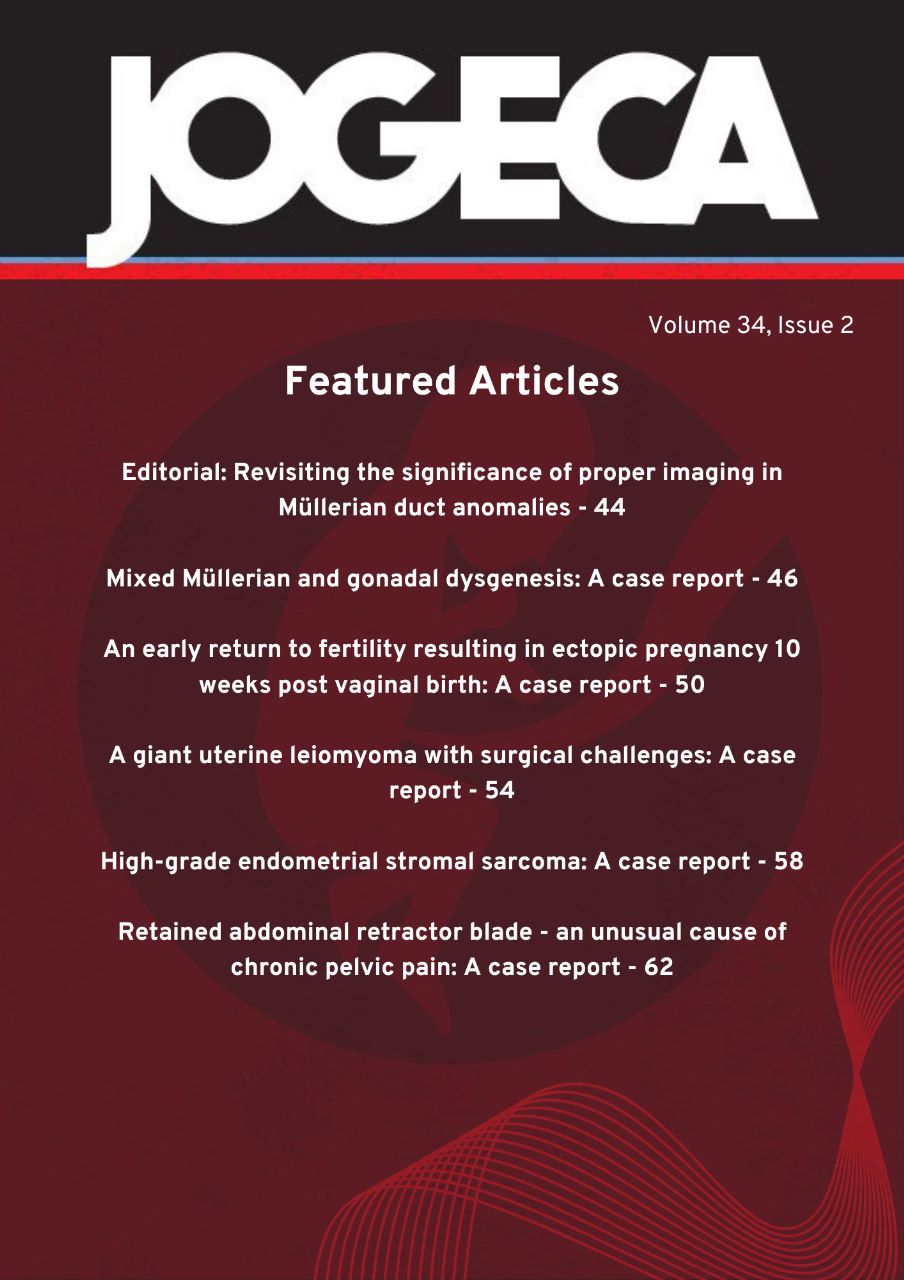Predictors of Hydrops Fetalis Infants by Mode of Delivery
DOI:
https://doi.org/10.59692/jogeca.v36i1.121Keywords:
Predictor of Hydrops fetalis infants, mode of delivery, cesarean section, survival, perinatal mortality, neonatal death, mirror syndromeAbstract
BACKGROUND: Hydrops fetalis is a fetal condition associated with higher perinatal and neonatal mortality and morbidity. The overall survival rate from the diagnosis is today estimated to be 27% despite advanced intrauterine and neonatal care. Factors that contribute to poor perinatal and neonatal outcomes have been identified; however, little is known about the existing specific predictor tool of perinatal outcome by mode of delivery.
OBJECTIVE: the study aimed to determine whether cesarean section does improve the perinatal outcomes of hydrops fetalis infants.
STUDY DESIGN: This was a retrospective cohort study that retrieved 102 medical records of pregnancies complicated by hydrops fetalis. For all those women, the transabdominal ultrasound was performed during pregnancy as part of the standard diagnostic modality of intrauterine hydrops fetalis. All pregnant women’s and their newborn’s medical records were retrieved and reviewed to collect information related to the outcomes as per the mode of delivery either by cesarean section or vaginal delivery. Based on the severity of fetal disease as described by obstetric ultrasound findings, pregnant women were divided into 4 groups: mild, moderate, moderately severe, and severe hydrops fetalis. The significance of the obtained data was set at two-tailed p<0.05. The chi-squared test was used to compare categorical between groups based on outcomes. Fisher’s exact test or Monte Carlo correction was used for chi-squared analysis when more than 20% of the cells had an expected count <5. The odds ratio and 95% confidence interval for perinatal adverse outcomes were calculated using logistic regression.
RESULTS: The incidence of hydrops fetalis was estimated to be 1.1% in this cohort study. The non-immune hydrops fetalis was the common type, accounting for 75.6% of all cases. Perinatal mortality occurred in 55.9% and the 7-day survival was estimated at 44.1%. The mortality rate was 66.1% in non-immune hydrops fetalis. There was a statistically significant association between the mode of delivery and the overall survival (pv-0.04). However, survival was increased in class I and class II (55.0%), while survival was equally observed in classes III and IV (22.5%). There was a statistically significant association between the class and survival (pv <.001). Birth weight of ≥3000 grams was associated with reduced poor perinatal outcomes at 0.3% (pv-0.02, 95% CI=0.14 -0.85). Similarly, admission to the newborn unit was associated with reduced mortality by 2.5% (pv-0.04, 95% CI=1.0 - 6.4).
CONCLUSION: Cesarean section delivery does not improve the perinatal outcomes of hydrops fetalis newborns and it should be considered only for maternal concerns. The predictor tool of perinatal outcomes of hydrops fetalis infant per mode of delivery is a useful tool to assist in decision-making and predict the perinatal outcome of hydrops fetalis per mode of delivery.
Downloads
Published
How to Cite
Issue
Section
Categories
License
Copyright (c) 2024 The authors.

This work is licensed under a Creative Commons Attribution 4.0 International License.




